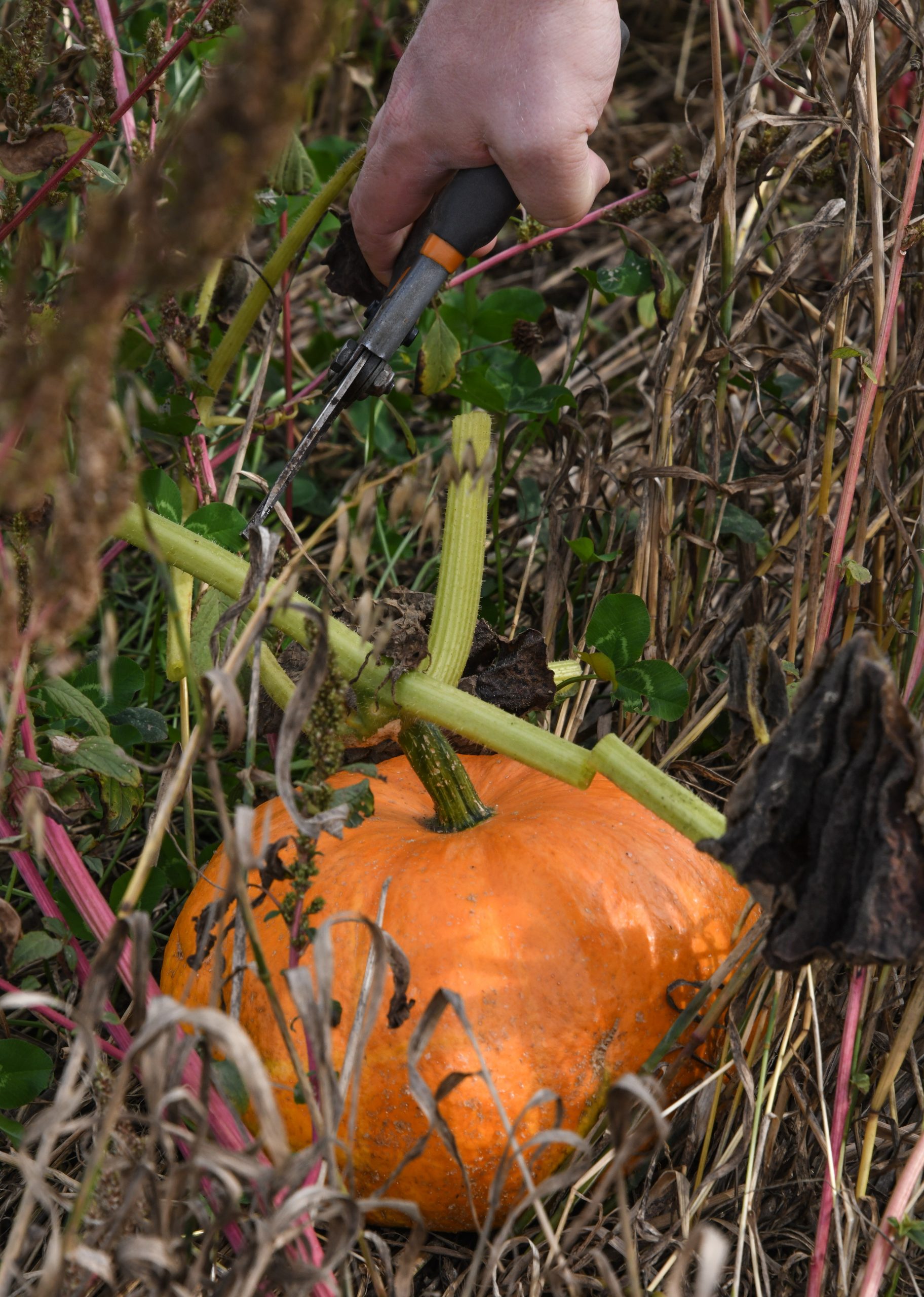Return to the Pumpkin Patch
I can’t let autumn pass by without mentioning that amazing, globular fall fruit known as the pumpkin. Ranging in size from two to a whopping 800 pounds, this hefty fellow was once relegated to seasonal pies and decor. Today, though, I keep this low-fat, low-calorie, firm-fleshed gourd in my kitchen long past Thanksgiving. Although I lack the green thumb and good soil to grow pumpkins, thanks to friends who have both, I’ve learned a thing or two about harvesting a great pumpkin. A trailing plant, this winter squash needs space to grow. It likewise requires temperate weather and regular watering. Mature at 16 weeks, a pumpkin can be picked and stored whole in a cool, dry, dark place for several months. When cut, it must be refrigerated and used within a few days. How to use a freshly cut pumpkin? I love turning it into a silky puree. After removing the seeds, I put the pumpkin halves, cut side down, on a rimmed baking sheet and sprinkle a half cup of water over them. I …
